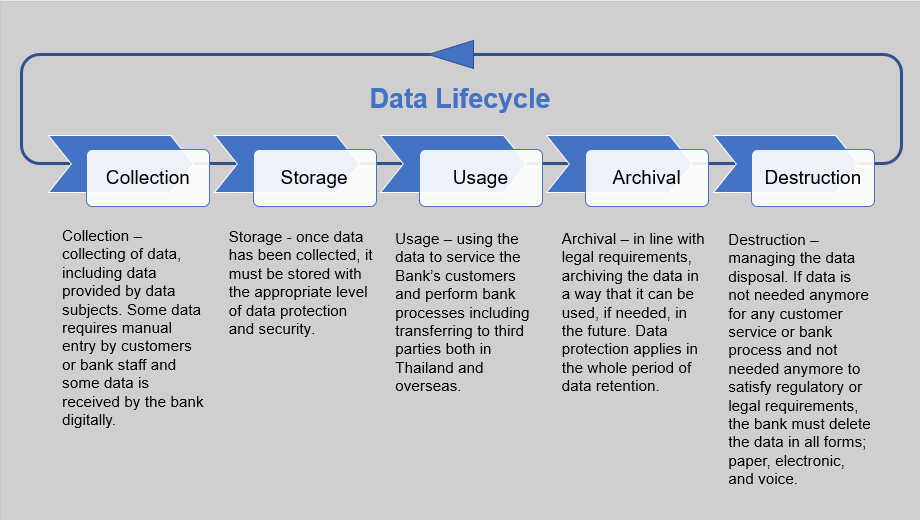The Effect of Effective Data Destruction on Cyber Security Threat Management
The Effect of Effective Data Destruction on Cyber Security Threat Management
Blog Article
The Significance of Effective Information Destruction Practices in Safeguarding Sensitive Details and Ensuring Computer Safety
In a period where information violations are increasingly usual, the relevance of effective information damage methods can not be overemphasized. Organizations face considerable dangers when delicate information is inadequately disposed of, possibly leading to unauthorized accessibility and extreme financial repercussions. Executing robust information devastation techniques not just alleviates these threats yet additionally aligns with lawful conformity demands, ensuring that companies maintain their credibility and foster client trust. Nevertheless, the question stays: what particular strategies can be employed to enhance these techniques, and just how can companies successfully incorporate them into their general cybersecurity framework?
Understanding Information Damage
Understanding information destruction is important in today's electronic landscape, where delicate details can quickly be compromised. Efficient data devastation entails not merely ensuring however erasing data that information is irretrievable through extensive methods. This procedure is necessary for companies that manage private customer details, intellectual building, or interior papers, as any type of breach can cause extreme monetary and reputational repercussions.
Data damage includes different strategies, consisting of shredding physical media, degaussing magnetic storage space gadgets, and utilizing software-based services that overwrite data multiple times. Each technique serves a details function and has to straighten with the level of sensitivity of the information being disposed of. For example, physical devastation is often chosen for tough drives containing extremely private information, while software program techniques could be sufficient for less sensitive information.
In addition, adhering to sector standards and laws, such as the General Data Security Law (GDPR) or the Health Insurance Policy Portability and Liability Act (HIPAA), is crucial for compliance and to mitigate legal threats. Organizations needs to create a durable information destruction policy, train employees on best practices, and routinely investigate their procedures to guarantee that all delicate info is dealt with securely and properly.
Threats of Inadequate Practices
Inadequate data destruction methods subject organizations to significant dangers that can have far-reaching consequences. When delicate information is not correctly dealt with, it continues to be prone to unapproved gain access to, which can result in information violations and identification theft. Such cases not only compromise the safety of individuals but additionally tarnish the company's credibility, causing a loss of consumer count on and potential economic consequences.
Additionally, governing conformity is progressively stringent in lots of markets. Failure to follow data damage laws can result in significant penalties and lawsuits versus companies. These penalties can divert and stress economic resources attention from core company operations.
On top of that, the abuse of residual information can lead to intellectual residential property theft or corporate reconnaissance, threatening affordable benefits (data destruction). The influence of poor information devastation expands beyond instant financial losses; it can also cause long-term damages to brand name honesty and market placement

Organizations should recognize that information safety and security is not entirely about avoiding breaches; it additionally incorporates the liable monitoring of data throughout its lifecycle. Neglecting effective information damage methods can have disastrous implications, emphasizing the necessity for durable actions to minimize these dangers.
Finest Practices for Information Destruction
Executing efficient information damage practices is important for protecting sensitive details and maintaining conformity with governing criteria. Organizations should adopt a multi-faceted technique to make certain that data is irretrievable, thus preventing unauthorized gain access to and prospective breaches.
First, data must be classified based on level of sensitivity, allowing organizations to apply ideal check these guys out destruction approaches customized to the degree of danger. For electronic data, using software-based data-wiping tools that follow industry standards can effectively overwrite existing information. Physical destruction techniques, such as shredding or degaussing, are critical for tools that store sensitive information, making sure complete eradication.
Establishing a clear information retention policy is essential, outlining just how long various types of information ought to be preserved prior to damage. Normal audits of data storage space systems are likewise necessary to determine outdated or unneeded information requiring elimination.
Furthermore, training workers on the significance of information destruction and the certain methods to follow fosters a culture of security within the organization. Maintaining documentation of data damage refines supplies liability and sustains conformity with interior policies and outside laws. By sticking to these ideal techniques, organizations can dramatically minimize the threats related to information direct exposure.
Legal and Conformity Considerations

Failure to follow these guidelines can cause severe fines, including significant penalties and reputational damages. Organizations should implement a durable information devastation plan that straightens with these legal structures and provides clear guidelines on the proper methods of information disposal, whether physical shredding or electronic cleaning.
In addition, maintaining paperwork of information destruction activities is essential for demonstrating compliance during audits or assessments. By focusing on legal and conformity considerations, organizations can boost their information safety and security stance and foster trust with stakeholders and clients, ultimately adding to an extra safe information monitoring setting.
Advantages of Effective Information Devastation
Reliable data devastation practices extend beyond plain conformity; they offer substantial benefits to organizations that prioritize them. By making certain that delicate details is irretrievably damaged, companies mitigate the threat of information violations and the possible economic consequences linked with them. This proactive approach not see page just safeguards against unauthorized access yet also improves the overall credibility of the organization in the company website eyes of stakeholders and customers.
Executing durable data devastation techniques, such as physical devastation of storage space devices or innovative information wiping strategies, contributes to the fortifying of an organization's cybersecurity pose. data destruction. It reduces the chance of copyright burglary and protects proprietary info, therefore keeping an one-upmanship out there

Verdict
In conclusion, reliable information damage techniques are crucial for protecting sensitive information and boosting general computer safety and security. Inevitably, a commitment to durable data devastation techniques fosters a society of responsibility, thus reinforcing an organization's cybersecurity pose and keeping customer trust fund.

Report this page